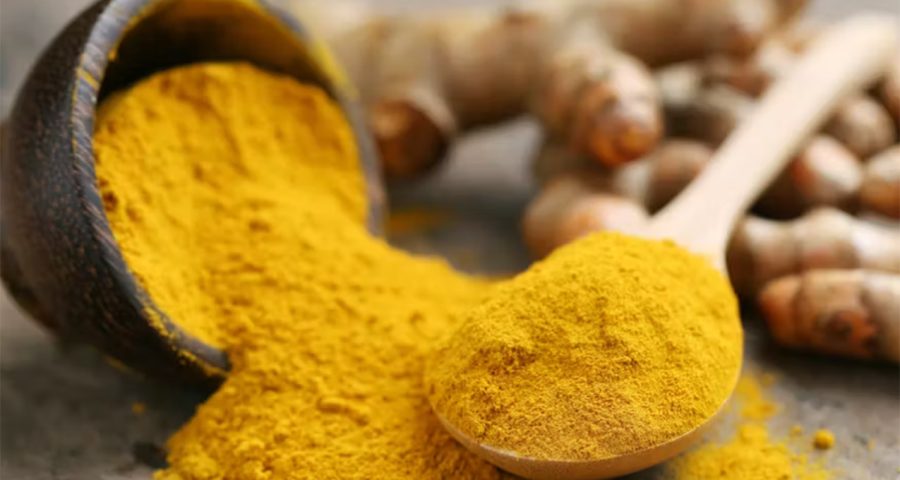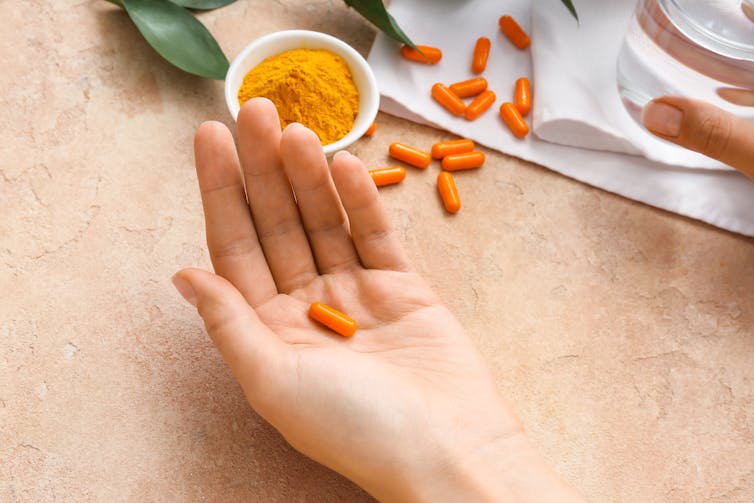
Turmeric: here’s how it actually measures up to health claims
Turmeric has been used by humans for more than 4,000 years. As well as cooking and cosmetics, it’s been a staple of the traditional medicine practice of Ayurveda, used to treat a variety of conditions from arthritis to wind. Even today turmeric remains a popular health supplement. There are plenty of articles and social media […]

Turmeric has been used by humans for more than 4,000 years. As well as cooking and cosmetics, it’s been a staple of the traditional medicine practice of Ayurveda, used to treat a variety of conditions from arthritis to wind.
Even today turmeric remains a popular health supplement. There are plenty of articles and social media posts claiming the benefits of this spice for everything from brain function to reducing pain and inflammation.
But while some of these claims are linked to evidence, most of this research is in cells and animals, making the actual effects on humans less clear.
While turmeric is reported to contain over 100 different compounds, most of its reported health benefits are linked to specific compounds called curcuminoids (the most abundant being curcumin).
Curcuminoids are phenolic compounds, which are molecules that plants often make as pigments or to discourage animals eating them. This is what gives turmeric its distinctive colour, but it can also change how cells function.
Many of the potential health effects of turmeric have been linked to these phenolic compounds which, in the lab, have been shown to have an antioxidant effect.
Antioxidants are substances which prevent or slow damage caused by free radicals – a harmful type of molecule that can cause inflammation and has also been linked to heart disease and cancer.
But while turmeric does indeed act as an anti-inflammatory, many of the health benefits caused by this effect have only been proven in the lab (using cells) or in animals.
For example, one study fed obese mice one gram of curcumin per kilogram of body weight. After 12 weeks, they found that the mice given curcumin had similar improvements in brain function and lower levels of inflammation in their liver as the mice who had been on a weight loss diet.
So while this may have translated to healthier mice, it’s unclear whether the same would be true in humans. Not to mention that had this study been conducted in humans, an average 70kg person would have needed to consume over 2kg of turmeric daily during the trial – which would be impossible.
Since no similar studies have yet been conducted on humans, we still don’t understand whether turmeric reduces inflammation in a similar way.
Effect on pain
Yet despite the lack of research showing benefits in humans, turmeric (and curcumin) are widely marketed as anti-inflammatory supplements for a range of conditions – including joint pain and arthritis.
According to the results of one review, it does seem that in human trials turmeric supplements may have a modest benefit on pain compared to a placebo – and in some cases as as beneficial as non-steroidal anti-inflammatory drugs.

But the studies included in this review appear to be of variable quality. Many were conducted using a very small population (ten people or fewer) and had a wide variation in the amount of turmeric participants were given. This means it’s hard to make a clear recommendation that turmeric is effective for pain.
Turmeric has also been suggested to have anti-cancer properties due to its anti-oxidant effect. In the lab, curcumin has been shown to reverse DNA changes in cells which cause breast cancer. But it’s less clear whether turmeric reduces the risk of cancer or supports treatment in humans.
Some research has shown that using a turmeric gargle could reduce the side effects of radiotherapy in people with head and neck cancers, however.
It may also help people with a rare genetic condition called familial adenomatous polyposis, with one clinical trial finding that consuming 120mg curcumin (about the same as a teaspoon of turmeric) was linked with fewer cancer-causing polyps for people with this condition – which can be a sign of the early stages of cancer.
With inflammation being linked to many cognitive health conditions such as dementia, some research has sought to understand whether turmeric can benefit brain function. So far, it’s unclear whether turmeric has any effect.
The trials that have been conducted in humans have generally been very small, with a lack of consistency in study design, dosage and how they measured cognitive effects. Again, this makes it difficult to see whether turmeric really does have an effect, or whether any cognitive improvements are due to other factors.
Does turmeric really work?
A major challenge in getting turmeric to work in our bodies is getting it from our gut into our bloodstream. Curcumin is quite a large compound – and as such can be hard for the body to absorb into the bloodstream because it isn’t very soluble in water.
But other research suggests that turmeric works by acting on the bacteria in our guts. Although more data is needed on whether this is true in humans, it could suggest that turmeric doesn’t need to be absorbed into the bloodstream in order to provide health benefits because it’s already absorbed through our gut.
Another challenge is the amount of turmeric needed to see benefits. In many studies only the curcumin extract is used – which makes up only about 3% of turmeric powder itself. With many studies giving greater than 1g of curcumin per kilogram for a mouse or rat, the equivalent amount for these effects to be seen in a human would be difficult to achieve – even in supplement form.
Turmeric is a great spice, giving a pleasant earthy flavour and vibrant natural yellow colour to food. But it’s far from clear how its reported benefits translate to human health. So, enjoy turmeric as a spice and a colour in food, but don’t rely on it to deliver major health benefits or to treat or cure disease.![]()
Duane Mellor, Lead for Evidence-Based Medicine and Nutrition, Aston Medical School, Aston University
This article is republished from The Conversation under a Creative Commons license. Read the original article.
